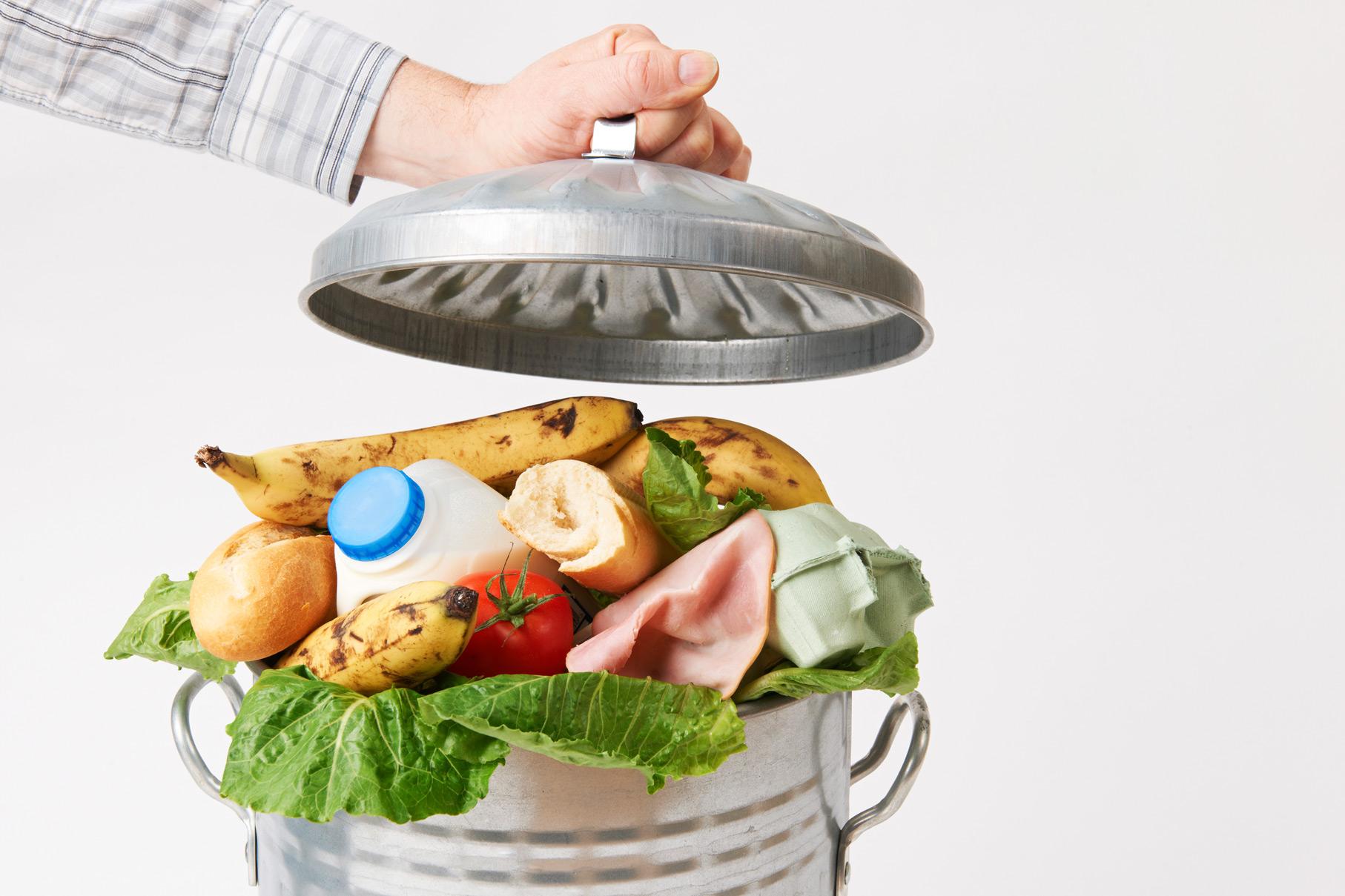Table of Contents
- Strategies for Sticking to a $100 Weekly Food Budget
- Essential Grocery List for Maximizing Nutrient Density
- Creative Meal Prep Ideas to Stretch Your Dollars
- Smart Substitutions for Cost-effective Cooking
- Tips for Reducing Food Waste and Saving More Money
- Q&A
- To Wrap It Up


Strategies for Sticking to a $100 Weekly Food Budget
To successfully manage your food budget, it’s essential to plan your meals strategically. Start by dedicating time each week to create a meal plan centered on the ingredients you already have. This not only minimizes food waste but also helps you identify the items you need to purchase. Consider creating a template meal plan that you can rotate weekly. This approach streamlines your grocery shopping and reduces impulse buys, ensuring you stay within budget.
Shopping smart is another crucial strategy. Use a shopping list and stick to it religiously—this will help you avoid unnecessary purchases. When in-store, consider buying store brands, as they often offer quality products at a lower price. Additionally, shop during sales or consider purchasing from local farmer’s markets for fresh produce at reduced rates. Remember to prioritize the following items when shopping:
- Dried grains and legumes – Cost-effective and versatile options
- In-season fruits and vegetables - Typically more affordable and fresher
- Bulk purchases – Can provide savings on frequently used items
consider cooking in bulk and utilizing leftovers creatively. Preparing larger portions can save you both time and money throughout the week. Dedicate one day to cooking staples like soups, stews, or casseroles, which can be portioned and frozen for future meals. This method not only keeps your meal options varied but also ensures that you’re making the most of your budget. Here’s a simple table to illustrate a basic meal plan for a week:
| Day | Meal |
|---|---|
| Monday | Vegetable Stir-Fry with Rice |
| Tuesday | Lentil Soup with Bread |
| Wednesday | Chickpea Salad |
| Thursday | Pasta with Marinara Sauce |
| Friday | Homemade Pizza |
| Saturday | Egg and Vegetable Omelette |
| Sunday | Leftover Day |


Essential Grocery List for Maximizing Nutrient Density
When you’re working with a budget of $100 per week, it’s crucial to focus on foods that offer the highest nutritional value without breaking the bank. Begin with whole grains, such as brown rice, oats, and quinoa, which can be the foundation of various meals. These grains provide essential carbohydrates and fiber, promoting good digestion and sustained energy. They are not only filling but also incredibly versatile, allowing for a wide range of dishes from breakfast bowls to hearty dinners.
Next, prioritize fresh produce, aiming for a colorful selection that enhances both nutrient density and taste. Focus on items like leafy greens (spinach, kale), cruciferous vegetables (broccoli, cauliflower), and seasonal fruits (berries, apples). These foods are rich sources of vitamins, minerals, and antioxidants, contributing to overall health and wellness. Incorporating a variety of colors in your vegetable selection can ensure a broader spectrum of nutrients while adding visual appeal to your meals.
Don’t overlook the importance of protein sources in your grocery list. Affordable options like eggs, canned beans, lentils, and frozen chicken can provide the necessary building blocks for muscle repair and energy. These items are not only budget-friendly but also allow flexibility in meal preparation. Additionally, consider incorporating some healthy fats, such as olive oil and nuts, which are vital for hormone regulation and nutrient absorption. These can be used sparingly to enrich your meals, providing both flavor and a health boost.


Creative Meal Prep Ideas to Stretch Your Dollars
Planning your meals creatively can significantly stretch your budget while providing delicious and diverse options throughout the week. Consider investing in versatile ingredients like rice, beans, and seasonal vegetables that can form the foundation of multiple meals. For instance, a big batch of spaghetti sauce can be repurposed: use it with pasta one night, turn it into a chili for the next, and then transform any leftovers into a hearty soup. A little creativity goes a long way, and you can create flavorful combinations without breaking the bank.
Don’t underestimate the power of batch cooking and using your freezer wisely. Prepare meals in bulk and portion them out for later use. Double recipes for dishes like stews, casseroles, or stir-fries, then store them in labeled containers. Here are some practical ideas to keep your freezer stocked:
- Homemade burritos filled with rice, beans, and veggies
- Vegetable soup with beans and grain
- Meatballs ready for a quick sub or pasta dish
Shopping sales and using coupons can also enhance your meal prep strategy. Create a list based on weekly grocery deals and look for ingredients that can be combined. For example, if chicken is on sale, buy in bulk and plan several meals around it. Here’s a simple table that demonstrates how you can maximize savings by planning around sales:
| Ingredient | Sale Price | Meal Ideas |
|---|---|---|
| Chicken Thighs | $1.99/lb | Grilled Chicken, Stir-fry, Chicken Tacos |
| Sweet Potatoes | $0.79/lb | Mashed Sweet Potatoes, Sweet Potato Fries, Soup |
| Spinach | $0.99/bag | Salads, Sauteed Spinach, Omelets |


Smart Substitutions for Cost-effective Cooking
| Expensive Ingredient | Cost-effective Substitute |
|---|---|
| Fresh Herbs | Ground Spices |
| Beef | Ground Turkey |
| Chicken Breasts | Legs or Thighs |
| Fresh Produce | Frozen Vegetables |
| Cooking Oil | Pumpkin or Applesauce (in baking) |


Tips for Reducing Food Waste and Saving More Money
Reducing food waste is not just an environmentally conscious choice; it also allows you to save more of your hard-earned money. Consider implementing these effective strategies to maximize your grocery budget:
- Plan Your Meals: Create a weekly menu before shopping to avoid impulse purchases. Tailoring your shopping list to your meal plan helps ensure you only buy what you’ll actually use.
- Use Leftovers Creatively: Transform leftovers into new dishes instead of tossing them out. For example, leftover chicken can become a hearty soup or be added to a delicious salad.
- Understand Expiration Dates: Familiarize yourself with ”sell by,” “use by,” and “best before” dates. These terms can be confusing, but knowing how to interpret them can help you avoid throwing away perfectly good food.
Another essential point in minimizing food waste is smart storage. Properly storing your food not only extends its shelf life but also ensures you have easy access to what you need:
- Keep a Clean Fridge: Regularly clean your fridge to organize food items. Make it a habit to place older items at the front, so they are used first.
- Store Produce Correctly: Some fruits and vegetables emit gases that speed up ripening. Store these items separately to prevent premature spoilage.
- Freeze Excess: If you have surplus food, consider freezing it. Many items, including bread and fruits, can be safely stored in the freezer for future use.
Lastly, understanding portion sizes can dramatically reduce the amount of food waste you generate. Adjusting how much you cook based on your household size is key:
| Food Item | Recommended Portion Size | Tips to Avoid Waste |
|---|---|---|
| Pasta | 2 oz per person | Cook in bulk and refrigerate any leftovers. |
| Rice | 1/2 cup cooked per person | Add to salads or stir-fries to use up remaining rice. |
| Meat | 3-4 oz per person | Use smaller cuts or bulk recipes to prepare in advance. |
Q&A
Q&A: Mastering a $100 Weekly Food Budget
Q: How can I effectively plan my meals on a $100 budget each week?A: Meal planning is crucial for making the most of a $100 food budget. Start by outlining your meals for the week, focusing on recipes that use similar ingredients. This way, you can buy items in bulk and reduce waste. Create a shopping list based on your meal plan to avoid impulse purchases, and stick to it while at the store.Q: What types of foods should I prioritize to stretch my $100 budget?A: Prioritize nutrient-dense, cost-effective staples. Whole grains (like rice and oats), canned beans, seasonal vegetables, and frozen fruits can be excellent choices. Proteins can include eggs, chicken thighs, or even legumes, which are affordable and versatile. Don’t forget to look for sales and discounts to boost your buying power!
Q: Are there any tips for saving money when shopping for groceries?A: Absolutely! Here are a few strategies:
- Buy in bulk: Items like rice, beans, and pasta are often cheaper in larger quantities.
- Use coupons and app discounts: Check for store specials or app-based savings before shopping.
- Shop at discount grocery stores: Consider local markets or grocery outlets where prices are typically lower.
- Avoid pre-packaged foods: They can be convenient but often come with a higher price tag.
Q: How can I ensure I’m still eating healthy on a limited budget?A: Eating healthy on a budget is all about making informed choices. Focus on whole foods—fruits, vegetables, lean meats, and whole grains. Incorporate a variety of colors in your meals to ensure you’re getting a range of nutrients. Meal prepping can also help you maintain healthy eating habits throughout the week and avoid the temptation of fast food.
Q: Is it possible to include snacks in my food budget?A: Definitely! Including snacks is entirely feasible with a $100 budget. Opt for healthier, cost-effective options such as homemade popcorn, fresh fruits, or yogurt. Preparing snacks at home rather than buying pre-packaged versions will save money and allow you to control ingredients and portion sizes.
Q: How can I minimize food waste while sticking to my budget?A: Food waste can derail even the tightest budget. To minimize it, plan meals that use the same ingredients. Store leftovers properly and consider having “leftovers night” to clear out the fridge. Also, getting creative with wilting vegetables—like making soups or stir-fries—can help utilize ingredients before they spoil.
Q: Can I incorporate treats or indulgent items into my budget?A: Yes, you can absolutely include occasional treats! The key is moderation and planning. Consider setting aside a portion of your budget for a small indulgence, like a special dessert or a drink. You can also make your own treats, such as baking cookies or creating homemade ice cream, which can be fun and economical.
Q: How can I adapt my budget as prices fluctuate?A: Flexibility is crucial when working within a budget. Keep an eye on seasonal produce and sales to adjust your meal plan accordingly. If certain items become too expensive, look for alternatives. For example, if chicken prices rise, consider switching to beans or canned fish for protein. Always be willing to adapt your shopping list based on what’s available and affordable.
By approaching your food budget with creativity and strategic planning, a weekly budget of $100 can provide you with nutritious, delicious meals while teaching valuable skills in budgeting and resourcefulness. Happy eating!




0 Comments